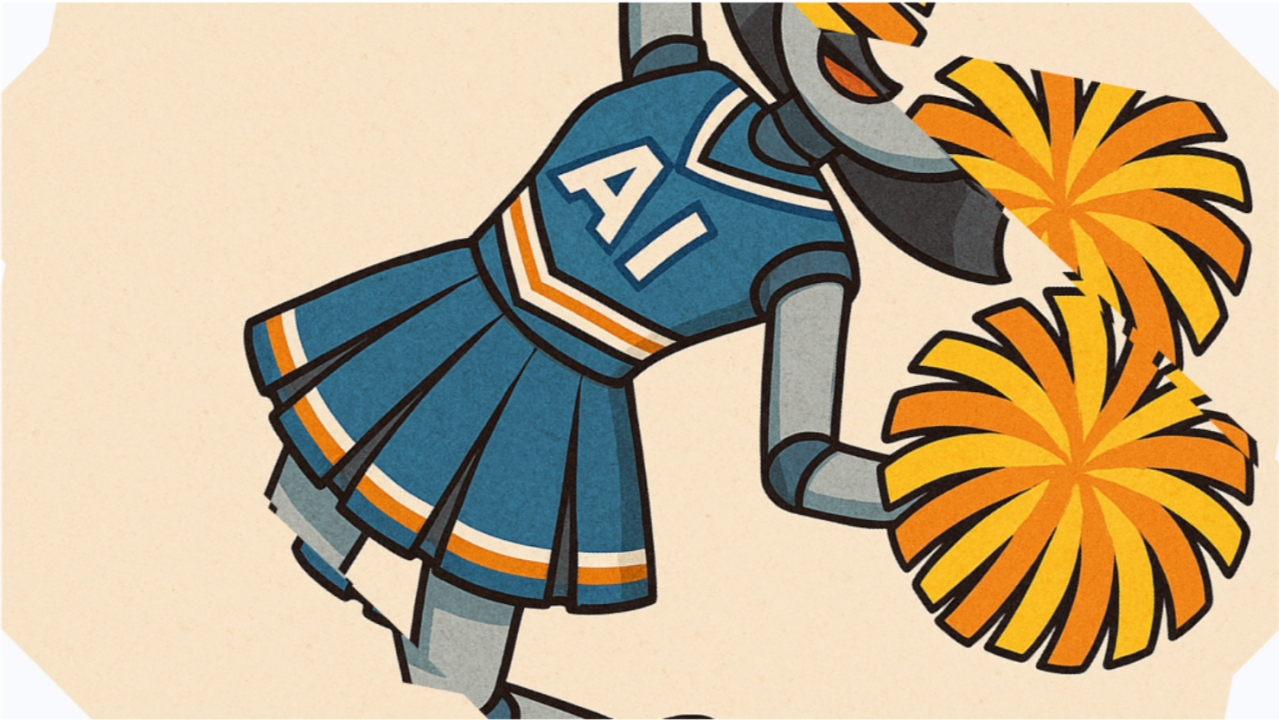
Not an AI cheerleader. An AI leader.
Anna - Founder
April 15, 2025
(And why that matters when you're building something new)
The other week, I joined an excellent training session on Being an AI Leader by Section School.
While most of the conversation focused on steering existing organisations through the evolving world of AI, I found myself thinking about something slightly different:
What does it mean to build AI leadership into a new organisation, from the ground up?
In my case, that organisation is We Build Too — a platform I’m developing to empower tradeswomen. From community and safety to training and opportunity, I want this platform to be built in a way that helps women thrive in the construction industry.
Designing with AI, not bolting it on
I don’t want to bolt AI onto things just because it’s fashionable. I want to design with it — and that means asking better questions:
Where is AI genuinely effective and helpful?
Where should human expertise remain central?
What tasks can be supported or made easier, without compromising values or experience?
In practical terms, AI could help tradeswomen:
Streamline admin and free up time for their craft
Access on-demand training and knowledge
Flag poor working conditions or signs of overload early
This isn’t about replacing people — it’s about supporting them better.
Collaboration, not cheating
Here’s the truth: sometimes using AI still feels like cheating. Even when it’s helping. Even when it’s smart.
I’ve realised that to use AI well, I have to unlearn a lot of what I’ve been taught about how to work:
That effort equals value
That “real work” means doing it all yourself
That technology is a shortcut rather than a partner
But when I treat AI as a thought partner, not just a tool, something shifts. It becomes part of my creative process. It helps me sharpen ideas, test assumptions, and move forward.
And that’s not cheating — that’s collaborating. And collaboration is something I’ve always championed and valued.
And as AI changes how we work, it’s also changing the shape of our roles — not replacing them, but refocusing them on outcomes over output.
Leading by doing
Right now at We Build Too, the only "full-time" person is me. But I’m actively exploring how AI fits into the DNA of what we’re building. And I’ll be honest — it’s not always quick or easy.
Sometimes the output isn’t quite right. Sometimes I have to slow down and rethink the prompt. Sometimes, using AI well actually takes more time.
But I believe that being an AI leader — not a cheerleader — means doing exactly that.
Managing the change
Leading by doing
Setting expectations early and clearly
Putting human needs first, always
Because AI doesn’t replace leadership. It requires it.
Outcome-focused, not output-obsessed
One takeaway from the training is increased confidence in my belief that the future of work is outcome-focused.
This doesn’t mean we get rid of jobs. It means we rethink what roles are for. We ask: what is the impact we want, and how can AI help us make it?
For me, that means building a platform that:
Works better, not just faster
Uses AI where it helps — and steps back where it doesn’t
Centres people, not processes
Because AI isn’t the star here. It’s the scaffolding. Human connection, community, and lived experience remain at the core.
Leading with AI is a practice
I’m still learning. And I’m okay with that.
Because for me, the goal isn’t to build We Build Too with AI. It’s to build it well, with care, with clarity, and with the right tools in the right places.
AI leadership isn’t about chasing every new feature or trend. It’s about being intentional and asking, “What are we really trying to do here?” And it’s about building trust in the tools, the process, and ourselves as we lead through change.
Because AI leadership isn’t about more. It’s about better.
Over to you
I’d love to hear how others are approaching this:
Where are you experimenting with AI in your work?
What feels exciting — and what still feels uncomfortable?
What was the impact of any bad examples you've seen?
Let’s talk — especially if you’re building something new, too
